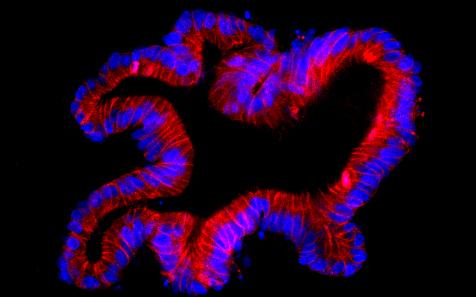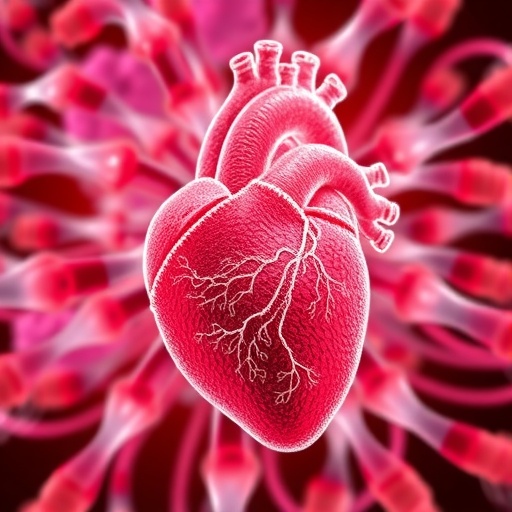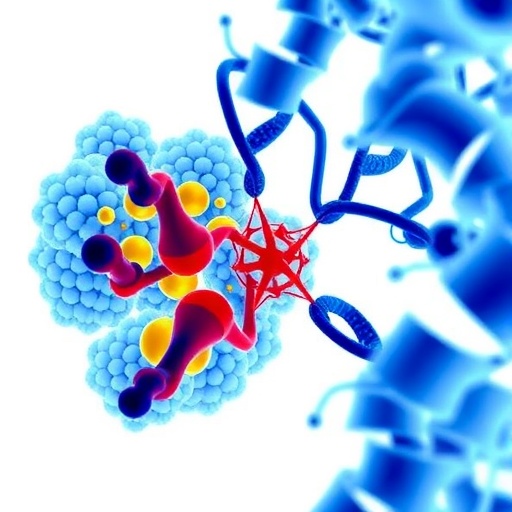A powerful Monash Biomedicine Discovery Institute (BDI) collaboration has revealed that a bacterial superbug can prevent stem cells in the gut from carrying out their vital role of regenerating the inner lining of the intestine. This causes potentially se

Credit: Dr Thierry Jarde
A powerful Monash Biomedicine Discovery Institute (BDI) collaboration has revealed that a bacterial superbug can prevent stem cells in the gut from carrying out their vital role of regenerating the inner lining of the intestine. This causes potentially severe disease, particularly in the elderly.
The research found that Clostridioides difficile infection, the most common cause of hospital-acquired diarrhoea, damages colonic stem cells via a toxin called TcdB, impairing tissue repair in the gut and recovery from disease. This understanding may now lead to new treatments or prevention methods.
C. difficile is responsible for more than half of all hospital infections related to the intestine and more than 90 per cent of mortalities resulting from these infections.
It grows after antibiotic treatment is administered to a patient, where it can upset the host-microbial balance in the gut allowing the bacterium to colonise.
The superbug can be transmitted from animals to humans and vice-versa and is now being uncovered in patients who have not had a recent hospital visit or taken a recent course of antibiotics. Instances have also been seen in a younger demographic than previously recorded.
The findings could have wider implications for those going through treatments for cancer such as chemotherapy and radiation therapy that also damage the gut.
The study, published in the journal Proceedings of the National Academy of Sciences of the United States of America (PNAS) today, was led by senior authors Professor Dena Lyras, an expert in infectious diseases, and Professor Helen Abud, an expert in stem cell biology, in conjunction with US collaborator Professor Borden Lacy from Vanderbilt University Medical Center in Nashville, Tennessee, who specialises in the structure of toxins. Joint first authors were Dr Steven Mileto (Lyras lab) and Dr Thierry Jardé (Abud lab).
“Our study provides the first direct evidence that a microbial infection alters the functional capacity of gut stem cells,” Professor Abud said.
“It adds a layer of understanding about how the gut repairs after infection and why this superbug can cause the severe damage that it does. The reason it’s important to have that understanding is that we’re rapidly running out of antibiotics – we need to find other ways to prevent and treat these infections,” she said.
“It shows that the toxins C. difficile makes are very important – TcdB targets the stem cells and damages them directly” Professor Lyras said.
“As a consequence the gut can’t be repaired. So where it normally takes five days to regenerate the gut lining, it can take more than two weeks. This can leave patients (particularly people aged over 65 years and who are already debilitated) with pain, life-threatening diarrhoea and other serious conditions.
“By understanding this new mechanism of damage and repair, maybe we can find ways to prevent the damage happening or develop new treatments,” Dr Jardé said.
The findings might also apply to other infections that behave in similar ways.
“There are a lot of different conditions that can make the gut more vulnerable – maybe there’s a common way we can target them too instead of thinking in isolation about an infectious disease problem,” said Dr Mileto.
The work was funded by a joint National Health and Medical Research Council project grant gained by the two senior Monash BDI investigators. Professor Lyras was also supported by the Australian Research Council.
###
Read the full paper in PNAS titled Clostridioides difficile infection damages colonic stem cells via TcdB, impairing epithelial repair and recovery from disease.
About the Monash Biomedicine Discovery Institute at Monash University
Committed to making the discoveries that will relieve the future burden of disease, the newly established Monash Biomedicine Discovery Institute at Monash University brings together more than 120 internationally-renowned research teams. Our researchers are supported by world-class technology and infrastructure, and partner with industry, clinicians and researchers internationally to enhance lives through discovery.
Media enquiries
Monash media
+61 3 9903 4840
[email protected]
Media Contact
Wendy Smith
[email protected]
61-399-034-840
Related Journal Article
http://dx.




